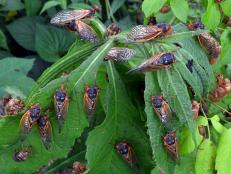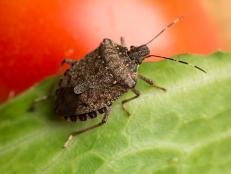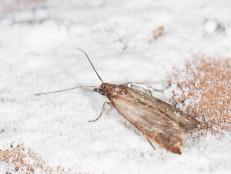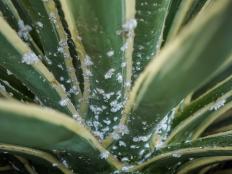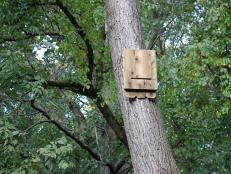Fun Facts About Garden Insects


Don’t get creeped out, but you should know this: you’re being watched every time you visit your garden.
There are about 10 quintillion insects living in the world right now, and a lot of them are watching as we go about our daily business. That’s according to scientists at the Smithsonian Institute of Entymology. And how many bugs are in a quintillion? It’s a one followed by 19 zeroes, so you can bet a bunch of buggy eyes are trained on you in your own backyard.
I’m not trying to scare you, although some of us get a little squeamish about spiders and the like. A lot of insects do good work, by gobbling up pests that would ruin our roses or nibble our eggplants.
Insects are actually pretty fascinating, once you peak into their hidden lives and secret abilities. Did you know, for example:
- The next time you stir a spoonful of honey into your cup of tea, you should thank those honeybees flitting around your flowers. It takes them approximately 10 million trips to gather enough nectar to make a single pound of honey.
- You may not need a squirt of bug spray every time you go outside. The vast majority of insects don’t bite people.
- Although many grasshoppers damage food crops, they’re part of the local diet in some parts of the world, including Africa and Asia.
- A tree in the rainforest can be a complete ecosystem—like a separate world—because many different kinds of insects live in, on, or under trees. Your trees are home to many species of bugs, too.
- If you grow roses, you should welcome ladybugs to your garden. A single hungry ladybug can munch up to 50 aphids a day, or as many as 5,000 aphids in a lifetime.
- Praying mantis are considered beneficial bugs, although they munch on both good and bad insects in our yards. “Mantis” comes from a Greek word meaning “prophet.”
- Even though it makes you hold your nose, that nasty smell emitted by stink bugs comes across like perfume to potential mates.
- Most grasshoppers make their distinctive sound by rubbing their hind wings against their forewings. This is called stridulating. (Now you know a new word, so you can impress your gardening friends.)
- Researchers say that primitive grasshoppers existed before the dinosaurs. Grasshopper nymphs have been found preserved in bits of amber.
- Snails can have shells that wind to the left or to the right. They also have jaws, which explains why they’re able to chew up our plants.







